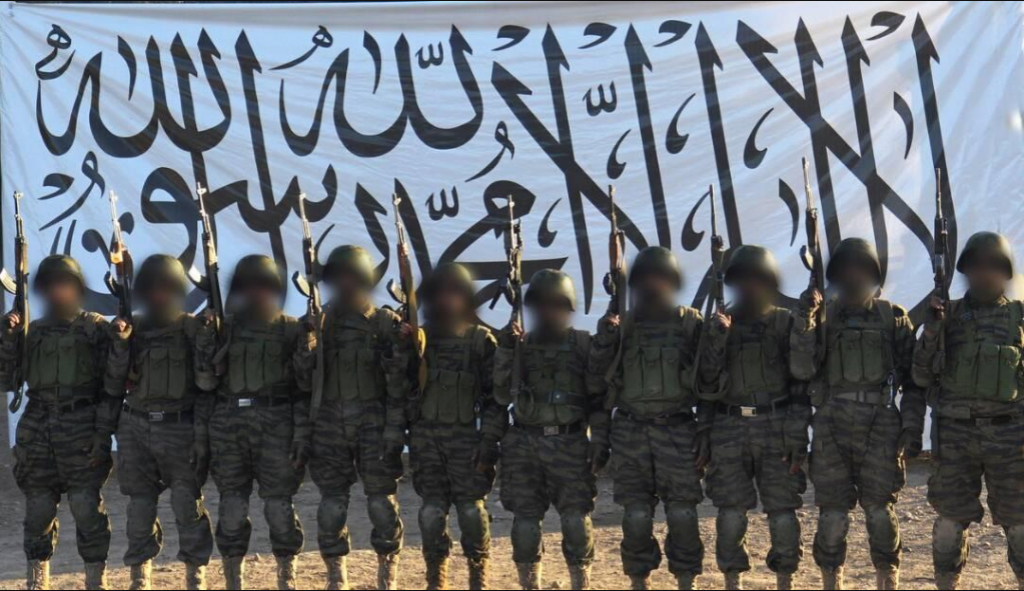The Taliban claimed that four of the fighters who executed Friday’s suicide assault on an Afghan Army corps headquarters in Mazar-i-Sharif in Balkh had “infiltrated” the military. At least 140 Afghan soldiers were reportedly killed during the Taliban operation, making it one of the deadliest and most effective attacks on a military installation in Afghanistan since the US invaded in 2001.
In a detailed statement released on Voice of Jihad, the Taliban’s official website, the group claimed credit for the assault on the 209th Shaheen Corps headquarters, which directs military operations in the Afghan north. It explained both the how and why of the decimating assault.
The Taliban said “10 martyrdom seekers Mujahideen equipped with heavy and light arms attacked” the base and fought Afghan forces for eight hours before being killed. The Taliban named members of the suicide team as “Ahmad Safi Balkhi, Mullah Lal Mohammad Nangahari, Hafiz Neamatullah Kabuli, Qari Fida Muhammad Baghlani, Hafiz Zabihullah Kunduzi, Engineer Talha Wardak, Mullah Jawad Kandahari, Hafiz Ziaur Rahman Kosti, Abdul Basir Parwani and Mohammad Nabi Ghaznavi.”
Their names indicate that the attackers came from 10 different provinces.
According to the statement, “four of these martyrdom seekers were infiltrated Mujahideen that were performing their duties in headquarter as soldiers for a long period of time in order to conduct this type of attack.” One of the Taliban fighters who infiltrated the military planted “a heavy amount of explosive materials in a large dining room” before the fighting began. The nine other fighters, dressed as Afghan military personnel, entered the base, fanned out and attacked Afghan military personnel.
The Taliban’s statement largely matches eyewitness accounts of the attack. Soldiers interviewed by Reuters said that two military pickup trucks with Taliban fighters dressed as Afghan soldiers penetrated security at the main gate first by pretending that they had wounded soldiers. When challenged at the next security checkpoint, the Taliban fighters opened fire and pushed their way past. Once inside the base, the Taliban fighters assaulted the mosque and dining facility and opened fire with RPGs, machine guns, assault rifles, and hand grenades. Several Taliban fighters detonated suicide vests in crowds of Afghan troops.
Disarmed Afghan troops inside the base were unable to return fire as Taliban fighters went on a killing spree. Afghan commandos from another part of the base were called in to engage the Taliban fighters. Afghan troops inside the base likely were disarmed as the facility is also used by NATO personnel to train local forces. NATO troops have suffered scores of casualties in green-on-blue or insider attacks, where Afghan forces, often aided by the Taliban, turn their weapons on their allies.
The Taliban claimed that the attack on the 209th Corps was executed to avenge the deaths of Mullah Abdul Salam, the Taliban’s shadow governor for Kunduz, and Maulvi Lal Muhammad, the shadow governor of Baghlan. The US military killed Salam, who directed Taliban operations in Kunduz, in February. Afghan forces claimed they killed Muhammad on April 19.
“The martyrdom battalion directed its ground [sic] of 10 Mujahideen for taking revenge of both governors by targeting the key enemy centers of the east region,” the group claimed.
The Taliban ended its statement by threatening Afghan security personnel who continue to work with NATO forces.
“It is better for mercenaries to avoid sacrificing for American and foreign interests anymore,” it said. “If they still continue protection of their masters, they are then responsible for their actions.”
The Taliban’s “Suicide Groups”
In the past, the Taliban has claimed to have “thousands of fully armed martyrdom seekers” at its disposal to conduct attacks inside Afghanistan and has provided some information on the structure of its “martyrdom units.”
The Taliban has identified two key leaders of its “Suicide Groups.” Mullah Taj Mir Jawad has been described as the head of a “martyrdom-seekers battalion.” Jawad swore allegiance to Mullah Mansour, the group’s previous emir, in a video released in Sept. 2015.
Qari Abdul Raouf Zakir, the “commander” of the Taliban’s “suicide groups,” also swore allegiance to Mullah Mansour in the same video. Qari Zakir, who was designated as a terrorist by the State Department in Nov. 2012, has long commanded the Haqqani Network’s suicide operations.
The Haqqani Network is an al Qaeda-linked Taliban subgroup that operates throughout Afghanistan and is based in Pakistan, where it is supported by Pakistan’s military and the Inter-Services Intelligence Directorate. Sirajuddin Haqqani, the operational commander of the Haqqani Network, serves as one of two deputies to Mullah Habaitullah, the emir of the Taliban, and as the head of the Taliban’s military.
The Taliban has also promoted suicide teams in its propaganda. The Muaskar ul Fida, one of several suicide squads operating in Afghanistan, previously swore allegiance to the Taliban’s last emir in Nov. 2015.









4 Comments
the taliban claim on their website to have killed and wounded over 500 ANDSF personnel in this attack.
What do folks think the ISI role in this attack comprised?
Training?
Weapons Procurement?
Target selection?
Real time command and control?
All of the above?
“Disarmed Afghan troops inside the base were unable to return fire as Taliban fighters went on a killing spree. ”
I know this is the north not the ever under pressure south but WTF really. Weapons should be at the ready or near at all times across Afghanistan.
According to [Abdul Qahar] Aram, the attack was masterminded outside of Afghanistan.
Terrorists using some gaps in the military corps enticed some security forces and entered the military base under the guise of transporting wounded soldiers ,” he said.
http://www.tolonews.com/afghanistan/provincial/army-base-attack-masterminded-outside-afghanistan-official
state sponsor state sponsor state sponsor!